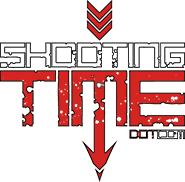Deadlock tuning technology, which is proprietary to Bowtech, is the simplest way to move your cams when tuning your bow. With the simple turn of the tuning screw, you can move your cam left or right. Let’s take a closer look at this technology.
The Deadlock Tuning Mechanism

The Deadlock tuning mechanisms are located at the end of the top and bottom limbs. They feature a lock screw, tuning (axle) screw, and an axle that is threaded allowing the axle to be moved left and right while being turned.
How to Use the Deadlock Tuning System
Follow these steps to tune your bow using the Deadlock Tuning System.
- With your bow to spec, synced, and with a proper arrow for your draw weight and length, shoot through a paper tuning jig.
- If you achieve a left tear, loosen both locking screws, rotate the tuning screws clockwise 1/4 to a 1/2 turn, tighten down the lock screws and shoot again through the paper. Repeat with smaller turns of the tuning screws until you achieve perfect arrow flight.
- If you achieve a right tear, loosen both locking screws, rotate the tuning screws counterclockwise 1/4 to a 1/2 turn, tighten down the lock screws and shoot again through the paper. Repeat with smaller turns of the tuning screws until you achieve perfect arrow flight.

If, during the Deadlock tuning process, you achieve a high or low tear, you’ll have to adjust your D-Loop location until you’re left with either a left or right tear.
Tips for using the Deadlock Tuning System
- Loosen both lock screws, max out both cams to the right side of the movement range by turning the tuning screws counterclockwise, and mark the screw and the housing with a permanent marker. This will give you a reference point that will allow you to turn the top and bottom tuning screws equally.

- The number of revolutions possible is 3.75 turns.
- The range of movement is 0.180″
- The mid point or center position is 1.875 turns from furthest left or right position of the cam.
- A little bit goes a long ways so if you have a rip that is 1.5 inches in length, start with 1/2 of a turn in each cam and then fine tune it from there.
